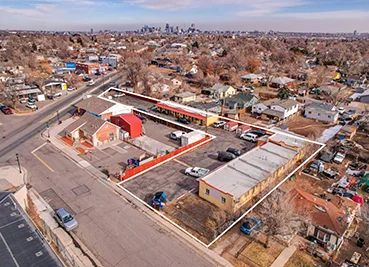
As seen in Globe St.
Multifamily accounted for the largest share of total CRE investment volume in Q1 at $28.8 billion.
A new report from CBRE points to signs of a rebalancing of supply and demand in the multifamily sector, leading to improved net absorption, lower vacancy, and rising rents in the first quarter of 2025.
Investors took notice, pushing up the volume of multifamily investment by 33% year-over-year to $28.8 billion, the highest 1Q total since 2022. Indeed, the sector accounted for the largest share of total CRE investment volume in the quarter, rising 33% year-over-year. With demand growing faster than new deliveries, the overall vacancy rate fell to 4.8%. Net absorption shot up by 77% to 100,600 units in 1Q 2024 – the highest quarterly since 2000, as rents rose by 0.9%.
On the supply side, 71,000 units were completed in the quarter, down from 120,000 in 4Q 2024, with further declines anticipated. Demand for these units exceeded supply by 42%. CBRE commented: “On a rolling four-quarter basis, demand outpaced the addition of 447,000 units by 32%.”
Positive net absorption was widespread in the quarter, affecting 63 of the 69 markets CBRE tracks. The greatest gains were in New York (8,600 units), Atlanta (7,000) and Phoenix (5,300). All markets saw positive net absorption on an annual basis. The highest increases as a percentage of inventory were in Sunbelt markets, especially Austin, Jacksonville and Raleigh.
Over the year, the 20 markets with the greatest increase in supply had more absorption than completions, representing 66% of national net absorption and 70% of completions. In 1Q 2025, Chicago, Atlanta, and Tampa led a list of 49 metros with more absorption than supply. In addition, the quarter saw new units under construction dive from 760,400 in 1Q 2024 to 602,500, or 3.3% of existing inventory.
The national multifamily vacancy rate also plunged 20 points to 4.8% in 1Q 2025—the biggest ever drop in a first quarter on record. The decrease was experienced in 47 markets, a trend likely to continue if deliveries keep going down. The lowest vacancy rates were in Providence, Honolulu, Long Island, New York City, and Newark.
Lower vacancy rates affected all three asset classes in the quarter. Class A fell to 5.1%, while Class B and C each saw drops to 4.7%. Rent growth over the year was 1.6%, 0.6%, and 1.2% for each asset class, respectively.
“With vacancy stabilizing across the asset spectrum, rent growth will likely accelerate in coming quarters,” the report stated.
“Average monthly rent increased by 0.9% year-over-year and 0.3% quarter-over-quarter to $2,184, marking the first Q1 increase since 2022. Negative rent growth continued to recede in most markets that had a recent wave of new supply.”
This trend is expected to continue. Rent growth was highest in the Midwest (3.3% annually), the Northeast (2.7%) and the Pacific region (0.9%). The greatest improvements were in Greenville, Lexington, Tampa, and Corpus Christi in Texas.
The number of markets with rent drops over the year fell from 28 to 19. Negative rents moderated in the Southeast (down 0.7%) and South Central (down 2.1%) regions. However, in the Mountain region, it accelerated to 3.1%. Particularly, Austin, Phoenix, and Denver had the highest levels of negative rent growth.
Overall, the trends in the multifamily sector have inspired some optimism among investors. Indeed, the industry accounted for the largest share of total CRE investment volume in Q1, “which likely will be reflected in 2Q 2025 deal closings,” the report commented. Rolling four-quarter volume increased by 4.9% to $154 billion. The average multifamily cap rate dipped from 5.7% in 4Q 2024 to 1Q 2025.
New York led the nation with a rolling fourth-quarter investment volume of $10.6 billion. It was followed by Dallas-Fort Worth ($10 billion) and Los Angeles ($9.5 billion). Annual investment volume for the six gateway markets—New York, Boston, Chicago, Los Angeles, San Francisco, and Washington, DC—climbed 48% to $43.2 billion from the prior year. These markets accounted for 28% of the total 2024 U.S. multifamily volume, the report stated.
“Economic uncertainty will continue to impact consumer sentiment and cause capital markets volatility, but the multifamily sector is poised to remain resilient,” said Kelli Carhart, CBRE’s head of multifamily capital markets.




